PRESERVING A MILITARY LEGACY FOR FUTURE GENERATIONS
The following Reflections represents SSgt Charles Stringer’s legacy of his military service from 1966 to 1972. If you are a Veteran, consider preserving a record of your own military service, including your memories and photographs, on Togetherweserved.com (TWS), the leading archive of living military history. The following Service Reflections is an easy-to-complete self-interview, located on your TWS Military Service Page, which enables you to remember key people and events from your military service and the impact they made on your life. Start recording your own Military Memories HERE.
Please describe who or what influenced your decision to join the Air Force.

I was not able to attend college immediately after graduating from high school and began working as a carpenter for local construction companies. Many of my friends were in similar situations and were considering the military or had already joined. The more I thought about it, the more sensible it became. My lifelong love of airplanes and my private pilot training gravitated me toward the Air Force.
I enlisted in October of 1966 under the Air Force’s Delayed Enlistment Program. I began active duty in November of that year at Lackland AFB in San Antonio, Texas, attending basic training with the 3701st Basic Military Training Squadron, Flight 2411.
Whether you were in the service for several years or as a career, please describe the direction or path you took. What was your reason for leaving?
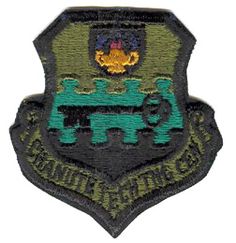
As an enlisted airman with a high degree of mechanical aptitude and scoring high on the Air Force’s testing protocols, I ended up applying for a career in aircraft management and maintenance. After basic training, I attended Technical School at Chanute AFB, Illinois, at the 3345th Technical Training Center. I was assigned to the 3370th Student Squadron and was appointed by my Squadron Commander as both a Yellow and Red Rope. In Tech School, the Air Force used a “Rope (aiguillette) System for student leaders. This was during the Vietnam War, and there was a shortage of NCOs, so they allowed the students to supervise and manage themselves by selecting outstanding students to attend leadership training to become a student leader. The Red Rope was the head of the entire squadron, Yellow Ropes were in charge of a flight or barracks, and the Green Ropes were basically assistants used by the red and yellow ropes within a barracks or squad.
The purpose of an Airman Leader (Rope) was to assist Military Training Leaders (MTLs), improve airman morale, and enhance personal leadership skills. Airmen leaders supervise or monitor students assigned to their squadron or placed under their charge.
As an Honor Graduate from Tech School, Aircraft Maintenance Specialist, I was given my next “base of choice” and selected Plattsburgh, AFB, New York, Strategic Air Command, and Organizational Maintenance Squadron (OMS).
I left Plattsburgh in August 1970 to attend the University of Vermont.
If you participated in any military operations, including combat, humanitarian and peacekeeping operations, please describe those which made a lasting impact on you and, if life-changing, in what way?

I was assigned to the Strategic Air Command (SAC) 380th Strategic Wing (SW) at Plattsburgh AB, NY. At that time, I volunteered and received deployment orders assigning me to the 4252nd Strategic Wing at Kadena AB in Okinawa, APO Code 96239. As described in their documented histories, both of these units were awarded the Vietnam Service Medal (VSM) for their engagements.
As stated above and depicted on Special Order Number T-1223, I volunteered and was deployed on Temporary Duty (TDY) status beginning 1 August 1968 and returned to Plattsburgh AB on or about 25 November 1968. This was a total of “120 days” (117 days on station, 3 months, and 25 days) attached to and a member of the 4252nd SW. The USAF, 8th Air Force, 3rd Air Division, 4252nd SW, maintained operational responsibility for all ArcLight combat missions in Vietnam beginning in February 1968 during the US Tet Counteroffensive and received the Outstanding Unit Award twice for its exemplary performance.
As an enlisted crew member on flight status and B-52 Crew Chief with a MOS of 43151E (Aircraft Maintenance Specialist), my orders required me to prepare and maintain my aircraft for combat operational sorties of both close air support and high altitude strategic bombing missions to Vietnam and other specified targets in the Southeast Asia theater of operations. This was, at the time, a “secret mission,” referred to as “Operation Arc Light” DoD Vietnam Counter Offensive Phase V and Phase VI, from July 1, 1968, through February 22, 1969, the aerial bombing of Vietnam during the TET Offensive. The total Arc Light crew inventory was subject to required rotation between three bases: Anderson AFB, Guam. U-Tapao, AFB, Thailand; and Kadena, AFB, Okinawa. Crew Chiefs were required to occasionally fly on those missions and accompanied aircraft on weather evacuation flights to U-Tapao AB, Thailand APO Code 96330.
Did you encounter any situation during your military service when you believed there was a possibility you might not survive? If so, please describe what happened and what was the outcome.
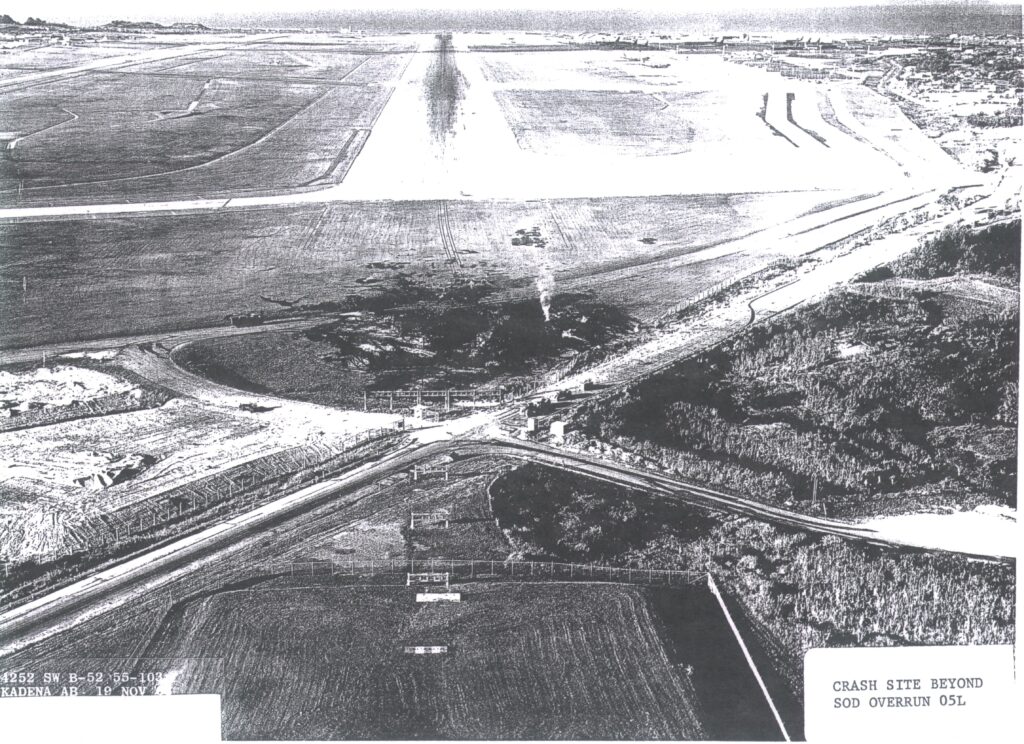
On November 19, 1968, at approximately 4:06 a.m., a B-52D Code Name Cream 2 crashed, exploded, and burned at the end of runway L5 on Kadena Air Base. It would be the second aircraft in the second cell of three B-52s and the fifth in a six-plane total formation. Both the EWO and Tail Gunner (my buddy) died as a result of the crash. Having a B-52 blow-up, with a fellow crew chief on board, down the road from my barracks had a tremendous and harmful impact on me. The B-52 crash on Okinawa never really made the news then, and even today, its loss was never really made public, nor documented in the US media. Air Force tail number 55-0103 is listed as “Aborting its takeoff and being destroyed by fire.”
Of all your duty stations or assignments, which one do you have fondest memories of and why? Which was your least favorite?

My fondest memory in the AF was when I was stationed at Plattsburgh, AFB in New York. I met many friends there, and was close to home, so I was able to visit family quite frequently. My least favorite was basic training, because of the excessive discipline that was required. Not to mention KP!
From your entire military service, describe any memories you still reflect back on to this day.
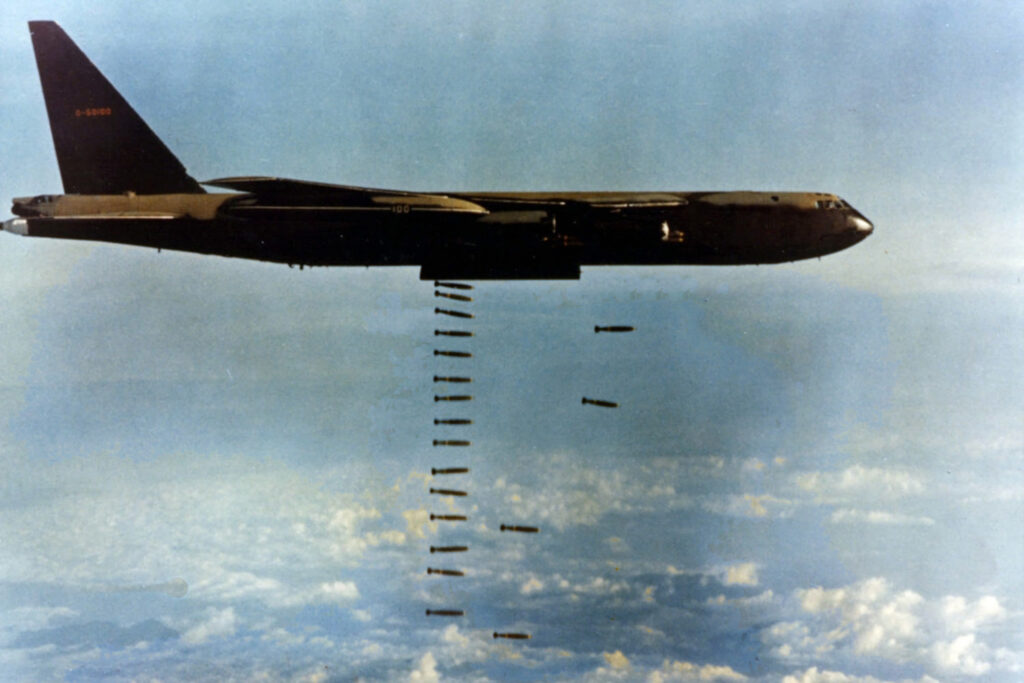
My primary duty assignment was with the 380 Strategic Wing, Organizational Maintenance Squadron, Strategic Air Command as a 43151E B-52 Crew Chief. In July 1968, I volunteered and was granted a Temporary Duty (TDY) deployment to Southeast Asia. Beginning in August 1968, I was assigned TDY with the 4252 Strategic Wing, Organizational Maintenance Squadron, Strategic Air Command at Kadena Air Base, Okinawa.
On November 18, 1968, after what was a typical day of Flight Line Duty, many troops of our squadron returned to the barracks after chow and spent time in the Orderly Room checking for mail, in the Day Room chatting with buddies, or at our bunks preparing for the next day’s assignment. It was still warm in November in Okinawa during the day, with temperatures in the 80s. At night it cooled down to the ’60s. I remember seeing and hearing a buddy, Jerry, telling everyone that he would be flying in the morning. He would be flying on a B-52D the next morning.
The next day, Tuesday, November 19, 1968, I was scheduled to recover one of the B-52s that flew the early mission. I hoped it was the aircraft Jerry was flying on so I could hear his account firsthand right after we parked it in the revetment. I would need to stay and perform the post-flight inspection and refuel the aircraft, but we would have a few minutes while the crew unloaded, boarded the crew bus, and proceeded to Base Operations. I hit the sack excited about the next day and looking forward to hearing from Jerry and the rest of the crew.
Sadly, my exuberant anticipation was brought to an abrupt and startling halt in the early morning hours of that day. I was fast asleep when I could hear the sound of B-52s taking off in the short distance to the Flight Line at a little past 4:00 a.m. I was jolted out of my bunk by a thunderous explosion, an earth-quaking motion, and a light that turned the night sky into the day. The shrapnel hitting the concrete barracks sounded like rain. Parts of the aircraft and chucks of explosives were found all over the base. It was violent and surreal. I rushed to the hallway and heard others shouting and talking in an attempt to understand what was happening. Were we under attack? The word was given to us to report for duty immediately. We boarded buses and traveled on Perimeter Road in the opposite direction we normally would take to the Flight Line. Already, whispers were being heard of a B-52 or KC-135 crash.
When we got to the Flight Line and got off the bus, we were shocked by the acrid smell of the air filled with smoke and other chemicals. It burned your eyes and was so thick you could taste it. Later that day, it was confirmed that a B-52 had indeed crashed and burned at the end of runway L5. It was the plane Jerry was on 55-0103. We learned that all the crew had escaped the aircraft but that two of them had been injured. As more details emerged, we were shocked to be told that SSgt. Jerry Scott, Tail Gunner, and Captain Charles Miller, EWO, suffered severe burns and were medevacked to a burn center hospital in Japan.
After a couple of days, I was able to see the crater-sized hole as long as a football field in the runway overrun. The aircraft was totally destroyed by the fire and explosions, and there was unexploded ordnance in the nearby terrain that was unaccounted for. It would be days before the area was safe for air, vehicle, and pedestrian traffic. In retrospect, it hurt to learn that this B-52 crash never really made the news at the time it occurred or even today, and its loss was never really made public nor documented by the United States media.
A few days went by before I learned the devastatingly sad news and both Jerry and the EWO had died as a result of their burns.
What professional achievements are you most proud of from your military career?
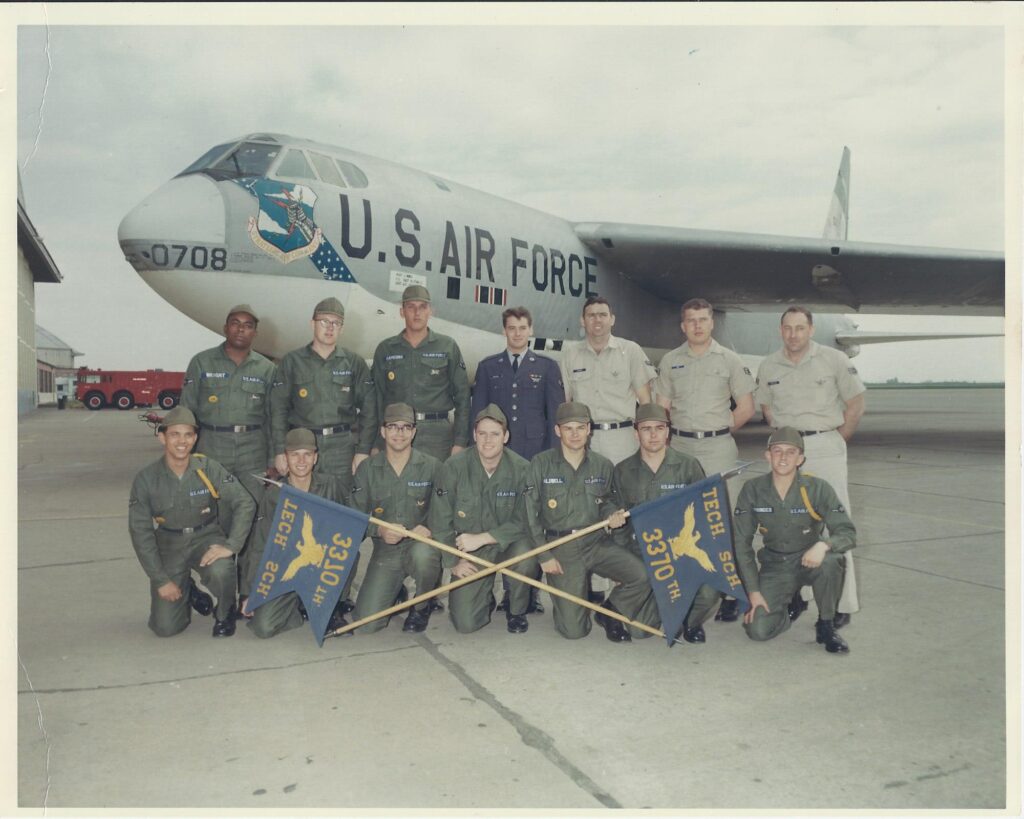
In January 1967, I was assigned to the Air Training Command (ATC) 3345th Technical Training Center, 3370th Student Squadron at Chanute AFB, Illinois. During my time at Chanute, I was selected for leadership training and appointed a student leader at both the squad (Yellow Rope) and squadron (Red Rope) level.
In addition, I was cited for “Outstanding Performance of Academic Duties” by Colonel Robert D. Montagne, Commander of the 3345th Technical School ATC, while attending the ABR43131E Aircraft Mechanic, Jet Over Two Engines Course.
Subsequently, I received a Letter of Commendation from Colonel H. O. Parsons, Chief Department AMT, of the 3345th Technical School ATC, citing my honor student achievement and excellent conduct record. This commendation was further substantiated by letters from Colonel Warren D. Johnson, Commander of the 380th Strategic Aerospace Wing, Plattsburgh AFB, New York, Colonel Robert S. Krause, Deputy Commander for Maintenance, of the 380th Strategic Aerospace Wing, and Lt. Colonel Daniel E. Humphries, Commander of the 380th Organization Maintenance Squadron at Plattsburgh AFB, New York.
This meritorious achievement and service, though not unique, required courage and fortitude to assume a leadership role within the squad and squadron. Assuming the role of a non-commissioned officer (NCO) at eighteen years old among a large group of peer-level airmen was a huge task and accomplishment. Although I was not recommended for the award, displaying the desired leadership traits, exemplary military bearing, personal integrity, dependability, enthusiasm, positive attitude, and scholastic achievement are all-inclusive in satisfying the criteria for an award of the AFCM.
Of all the medals, awards, formal presentations and qualification badges you received, or other memorabilia, which one is the most meaningful to you and why?
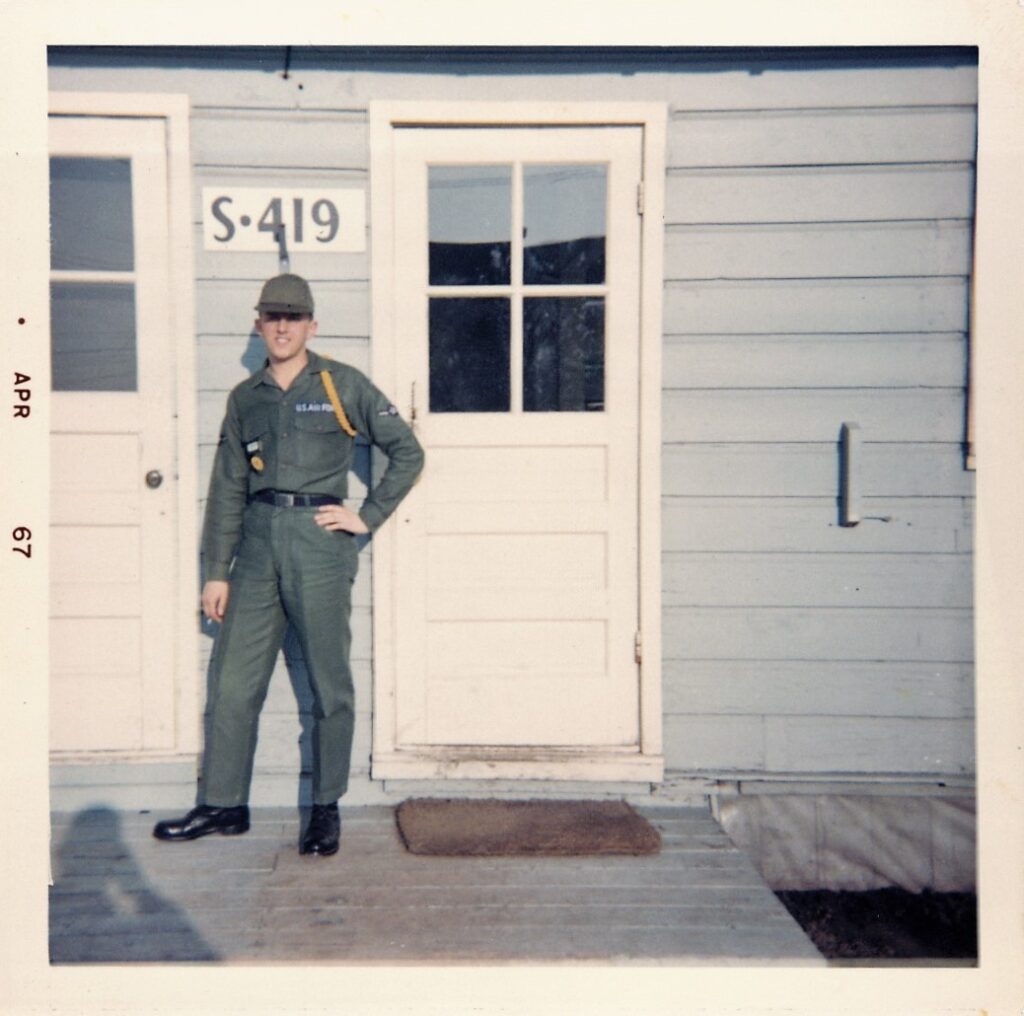
For me, receiving the Vietnam Service Medal (VSM) was most meaningful. My brother Dave was serving on the USS Enterprise patrolling the Gulf of Tonkin at the time, and we both received the VSM for our service.
Certainly, being selected to attend leadership school and subsequently being appointed as both a Yellow Rope and Red Rope was quite meaningful as well. Assuming the duties of an NCO at the age of 18 was very gratifying.
All of the many awards and medals I received while serving the United States of America were very meaningful and humbling.
Which individual(s) from your time in the military stand out as having the most positive impact on you and why?
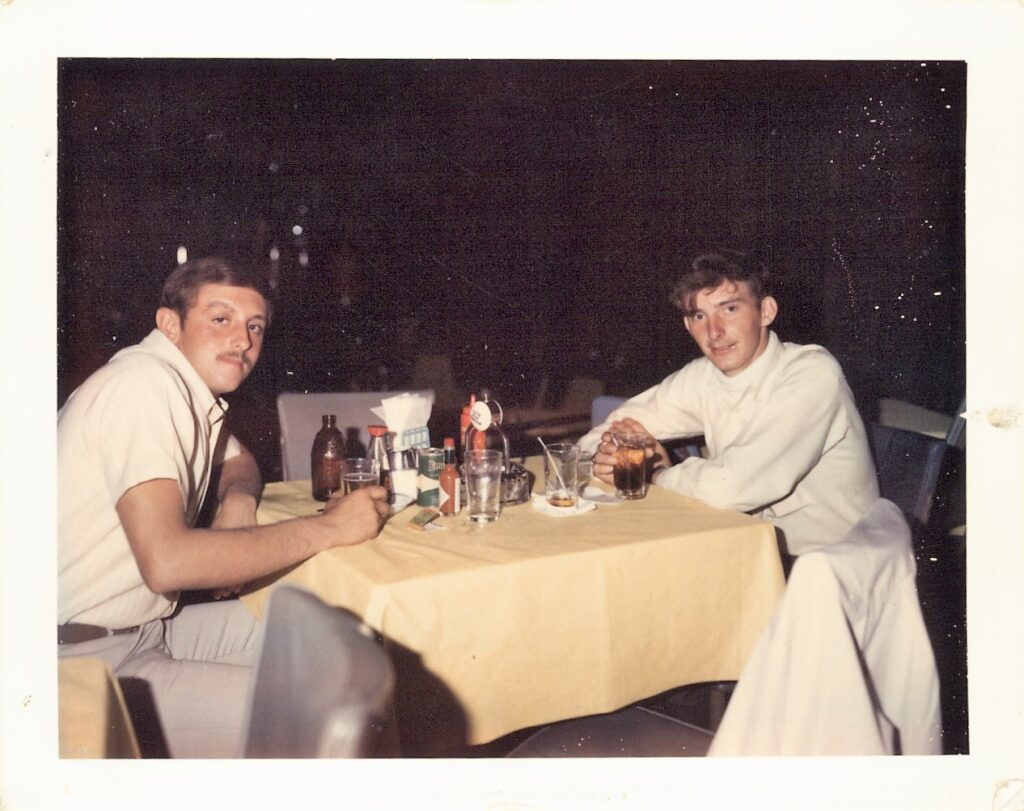
My TI at boot camp started the ball rolling in a positive direction. SSgt. Tucker was extremely well-qualified and was both a disciplinarian and a role model.
In Tech School at Chanute, TSgt. Ivey continued the pattern of positive reinforcement and attention to the military bearing. He recommended me for leadership training and was instrumental in assisting me with both leadership and academic issues.
As a Crew Chief, my first boss Billy Joe Crocker and his assistant Dave Bush provided me with a great foundation for proper aircraft maintenance. While deployed to Southeast Asia, Swen Lindquist was not only a great friend, but a wonderful team member during some very difficult times. As was my good friend Reg Felix who deployed with me in 1968.
List the names of old friends you served with, at which locations, and recount what you remember most about them. Indicate those you are already in touch with and those you would like to make contact with.
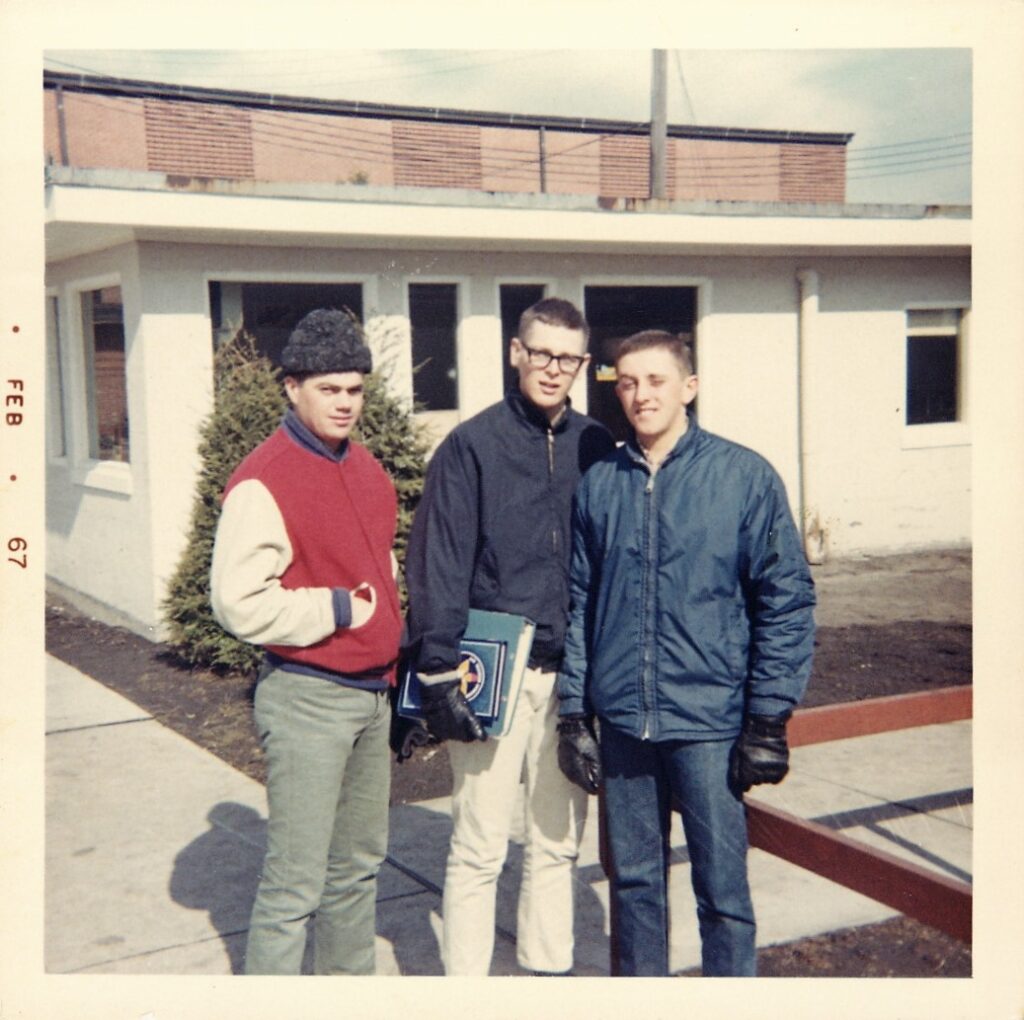
I served with Dave Bush at Plattsburgh AFB and have been in contact with him over the years. I would very much like to contact Reggie Felix, but to date have not yet been able to locate his whereabouts.
Lucky Thompson, Rod Fox, Benny Spence, Billy Joe Crocker, Larry Parnell, Ron Hart, Tom Sargent and many others were all great men and good friends.
There were so many other friends and so many great acquaintances, too numerous to mention and recall.
God bless them all!
Can you recount a particular incident from your service, which may or may not have been funny at the time, but still makes you laugh?
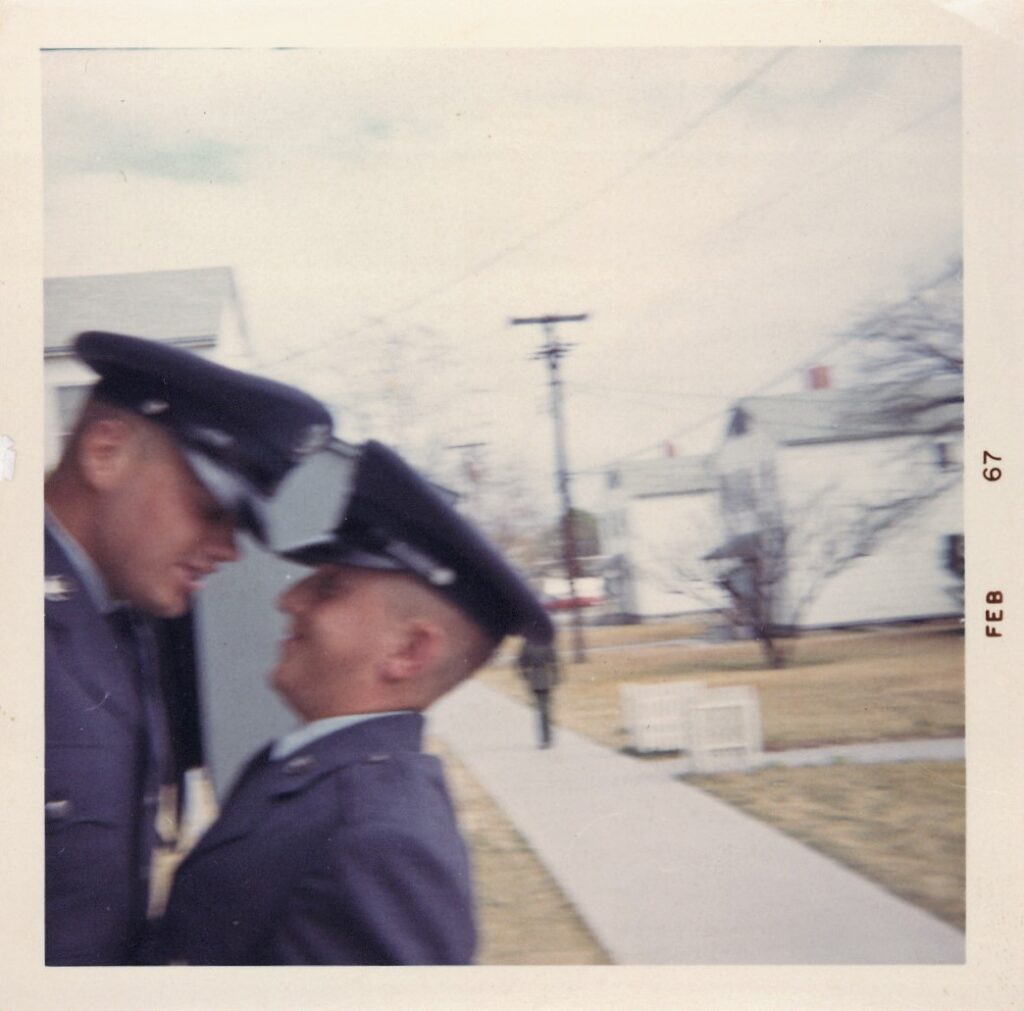
I attended Basic Training “Boot Camp” in November 1966 at Lackland Air Force Base, Texas. Once while assigned Dorm Guard duty, I was surprised by a banging on the entry door to our barracks that was locked shut. I identified the person banging and pulling on the doors as our TI Sargent Tucker. He insisted I let him, but would not recite the password that I was told was required before I unlocked the door and let anyone in. Even though Sargent Tucker threatened me with KP, GI party, and bodily harm, I refused to let him in. Eventually, he walked away, screaming and hollering my name along with other choice profanities.
The next morning Sargent Tucker summoned me into his office. While standing at attention, he looked me in the eye and said, “Good job last night, Airman Stringer. You did exactly as you were ordered to do. Dismissed!” It was not funny at the time, but I look back at that incident as a test of my military training and have a quiet smile or a good laugh depending on the audience at hand.
What profession did you follow after your military service, and what are you doing now? If you are currently serving, what is your present occupational specialty?
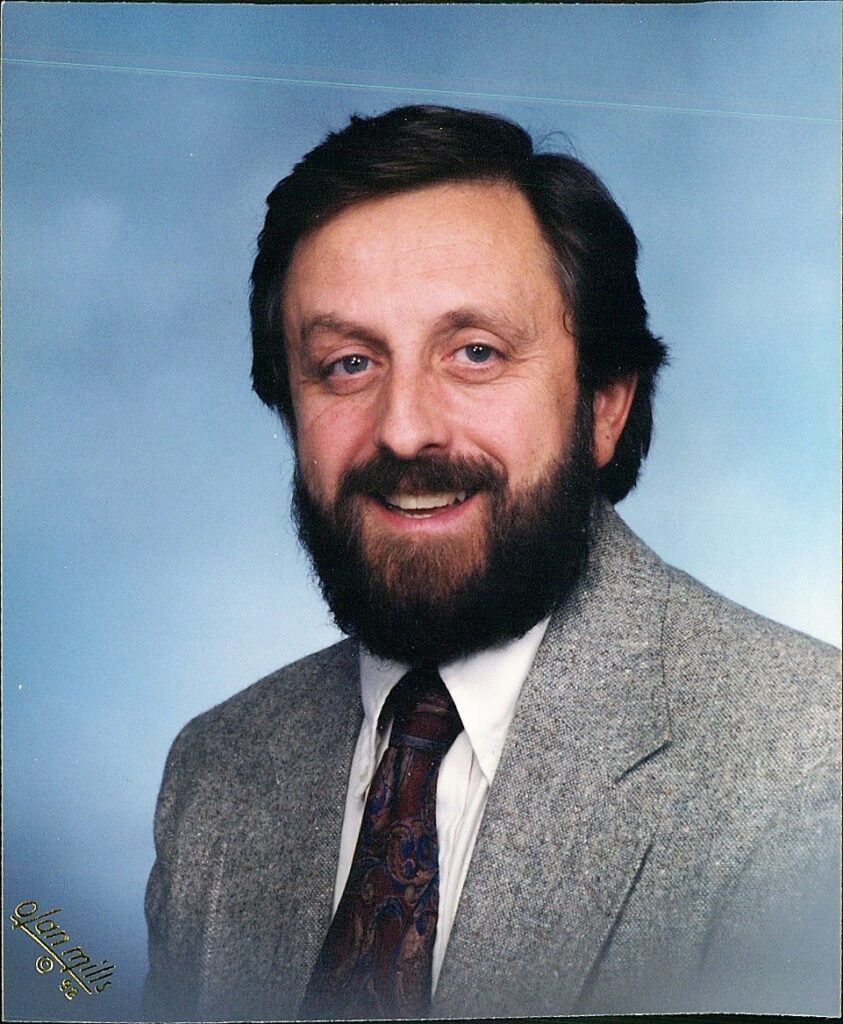
I worked in the construction industry while attending college. I attained the title of Journeyman Carpenter and graduated with a Bachelors Degree in Business Administration. I culminated my career as Chief Financial Officer at a local non-profit human service agency and retired after 35 years of service.
What military associations are you a member of, if any? What specific benefits do you derive from your memberships?

I am a Life Member of the American Legion, Veterans of Foreign Wars, Disabled American Veterans, Vietnam Veterans of America, B-52 Stratofortress Association, and the Air Force Association. I enjoy meeting the members, sharing stories, and receiving updates on what is happening in support of all Veterans.
In what ways has serving in the military influenced the way you have approached your life and your career? What do you miss most about your time in the service?
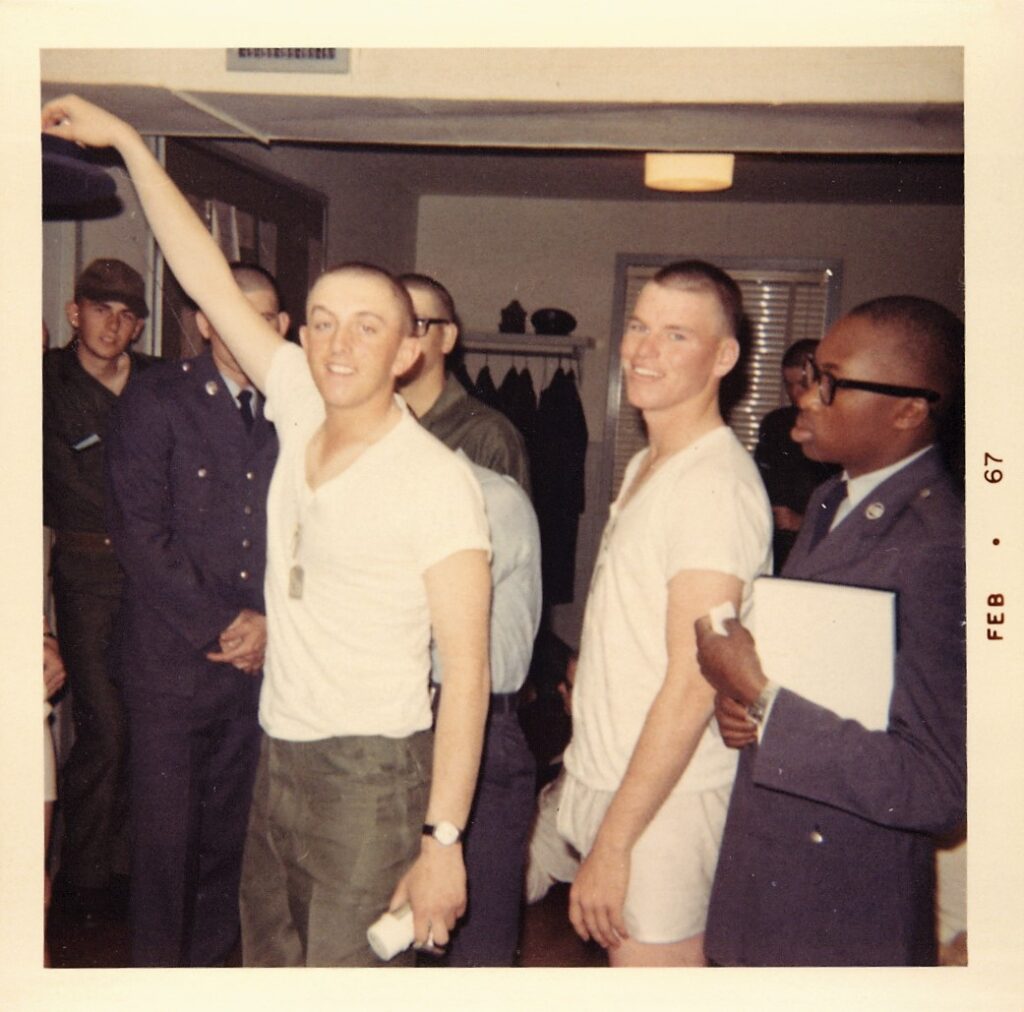
I believe that the rigid structure and Chain of Command in the military were instrumental in aligning my work ethic with my career goals. Being able to attack a problem in my civilian life with the same linear thinking developed in the military was extremely valuable. What I miss the most about being in the military is the people I served with and the deployments to other locations.
Based on your own experiences, what advice would you give to those who have recently joined the Air Force?
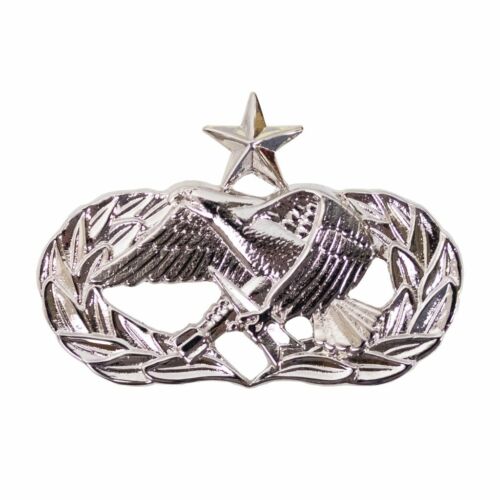
If you have recently joined the Air Force, my advice would be to take everything very seriously. Excel at all of the training afforded to you and do your absolute best at every assigned job. Take advantage of volunteering for deployments without fear of consequences.
In what ways has togetherweserved.com helped you remember your military service and the friends you served with.
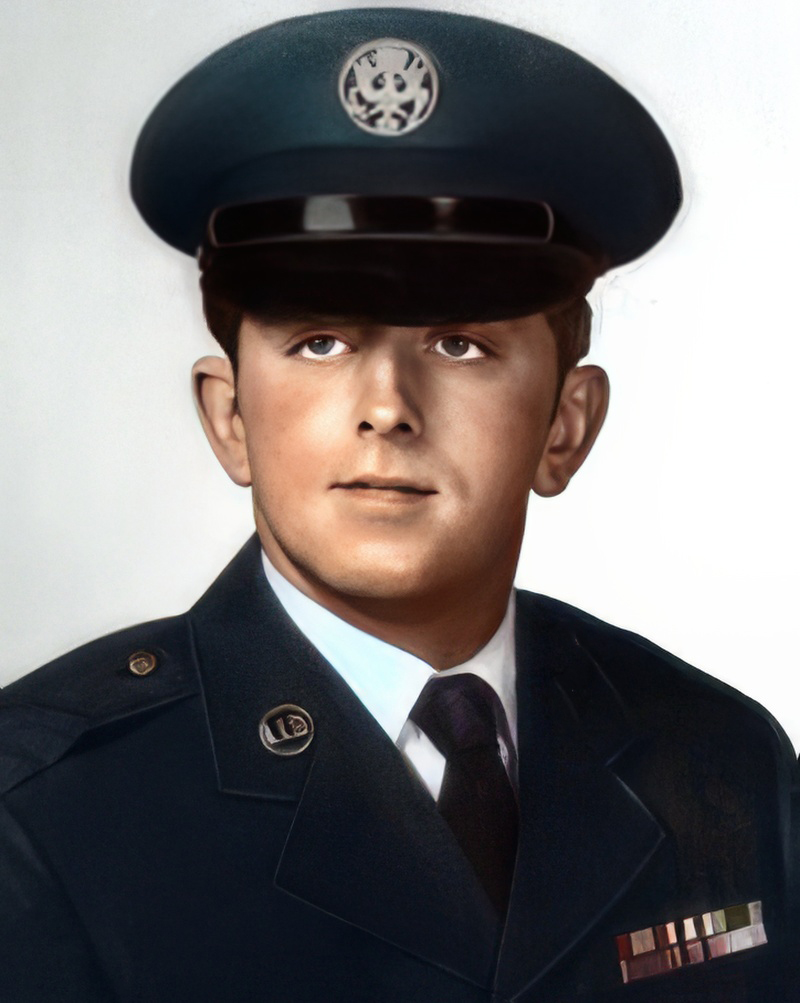
TogetherWeServed has provided the infrastructure and assistance necessary to remember and document my military service. Not simply for my own recollection, but for my current family and future generations. God Bless everyone at TWS, and God Bless the USA!
PRESERVE YOUR OWN SERVICE MEMORIES!
Boot Camp, Units, Combat Operations
Join Togetherweserved.com to Create a Legacy of Your Service
U.S. Marine Corps, U.S. Navy, U.S. Air Force, U.S. Army, U.S. Coast Guard
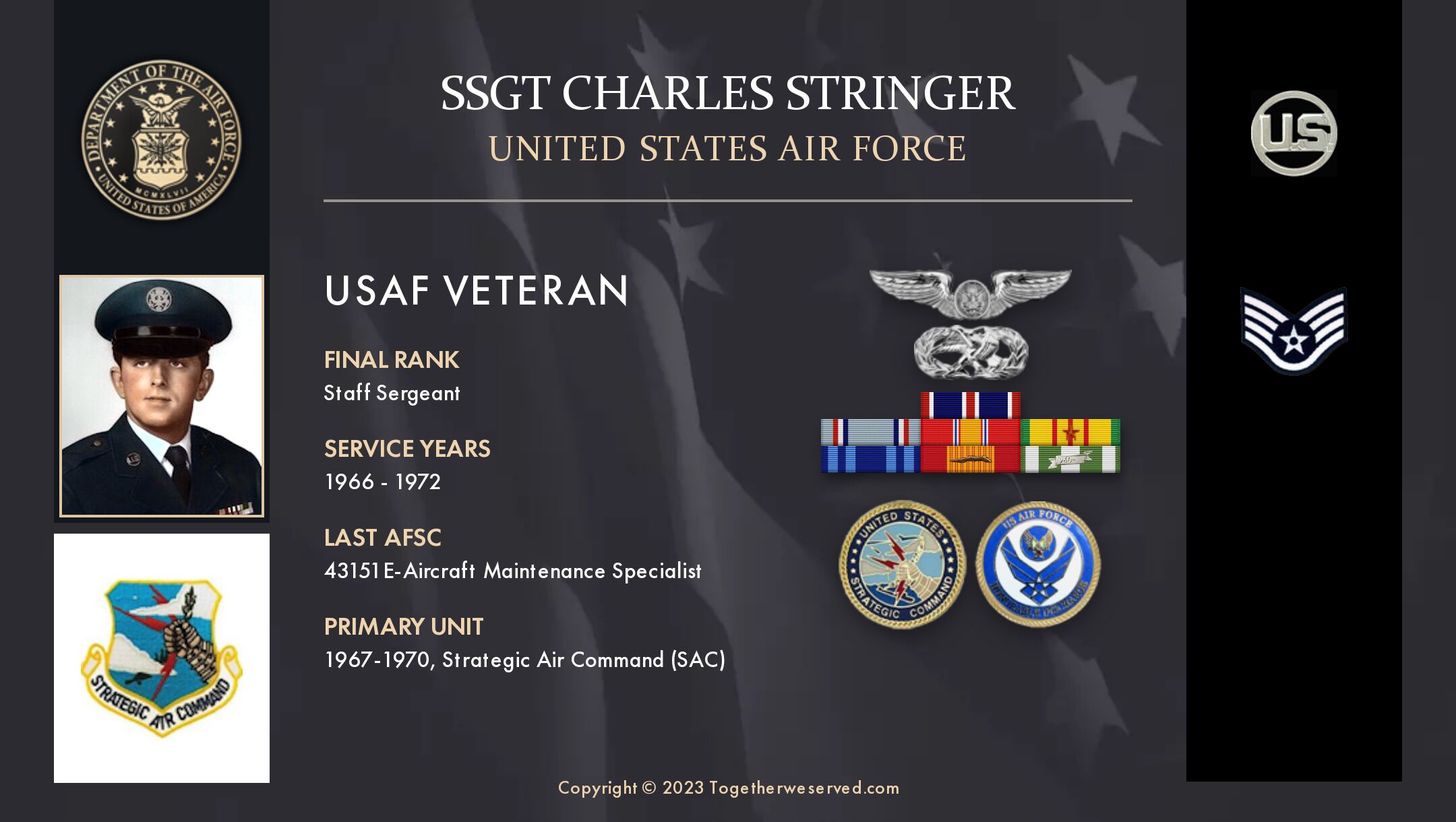
Ssgt stringer your article brings a lot of memories. I was tdy from Beale afb to kadena with the sr71 program as a kc135q crew chief (43151e) and on that early November morning I was doing a pre flt and saw that 52 when it blew up I thought that was the end for sure ! A lot of the Beale tankers had fuselage damage to the fuselage and wings due to flying debris thanks for your great article